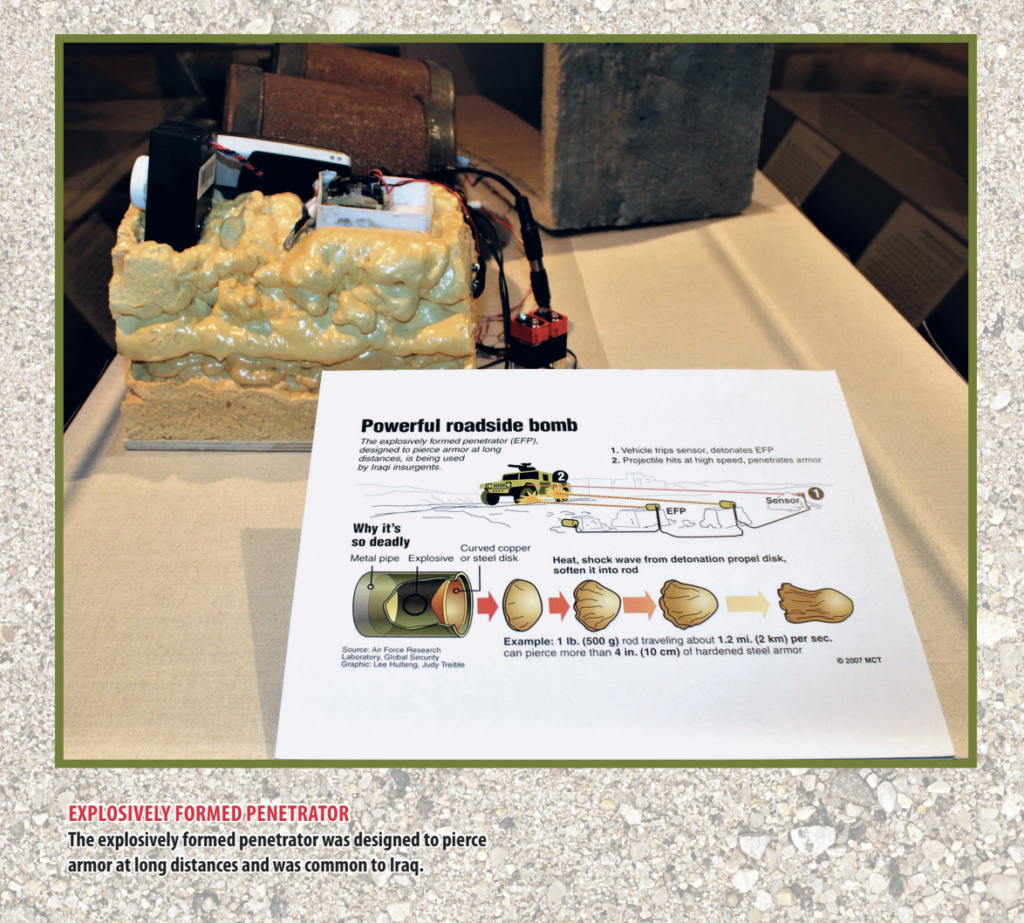NEW IMPROVISED EXPLOSIVE DEVICE EXHIBIT AT THE U.S. ARMY AIRBORNE AND SPECIAL OPERATIONS MUSEUM
By James Bartlinski and Derek L. Gunn, featured in the Army`History Magazine
The U.S. Army Airborne and Special Operations Museum has unveiled an exhibit focusing on improvised explosive devices (IEDs), in collaboration with the 28th Ordnance Company (Explosive Ordnance Disposal) (Airborne) and is currently designing a diorama to tell the story of this secretive company headquartered at Fort Liberty (formerly Fort Bragg), North Carolina.
The 28th Ordnance Company is the Army’s sole Airborne explosive ordnance disposal (EOD) company that provides direct support to the 75th Ranger Regiment and U.S. Army Special Operations Command. The 28th has been exclusively supporting special operations since 2008, deploying just 100 members during this time. Although they maintain an incredibly small footprint overseas, unit members have participated in approximately 5,500 combat operations across Iraq, Afghanistan, Syria, and Africa. For their efforts, these soldiers have earned thirty-two valorous awards, including two Distinguished Service Crosses, and nineteen Purple Hearts.
The diorama, although still in development, will explain the treacherous origins of EOD and then transition to the current mission of the 28th as being the Army’s preeminent technical and tactical explosives experts, highlighting its role in support of special operations forces. The exhibit will contain a mannequin outfitted in a bomb suit; a robot used for investigating IEDs; artifacts from the Global War on Terrorism; and an interview recounting a daring nighttime mission that led to numerous valorous awards including three Distinguished Service Crosses. The thought provoking exhibit examines the development of EOD and the role of the 28th during the Global War on Terrorism, when the use of IEDs was at an all-time high. Furthermore, the exhibit focuses on the mechanisms of terror EOD units across the globe have encountered. Likewise, the exhibit explores the history of IEDs, which have been in use for centuries.
Although the term IED first became popular during the Iraq War, in 2003, insurgents have been using IEDs globally since at least the 1500s. For instance, Dutch rebels converted merchant ships into floating IEDs, known as “hellburners,” to break the Spanish siege of Antwerp, and insurgents attempted to assassinate Napoleon with a cart-turned-vehicle bomb as the leader was making his way to an opera. Bomb-making technology has advanced significantly since those events, and these insidious instruments of terror have become more sophisticated and are now the weapon of choice for insurgents worldwide.
Although IEDs can be simple, homemade bombs, they can also be high-tech, complex explosive devices. The term IED is broad and is limited only by the creator’s imagination. Categories of IEDs include victim-operated; command; timed; and suicide IEDs. The exhibit identifies these various devices as well as the innovative counter-IED methods used by units like the 28th to detect and neutralize IEDs. The interactive exhibit puts visitors in the boots of an EOD technician as they walk through the exhibit’s “IED Awareness Lane,” searching for the devices. As visitors exit the exhibit, they get to see all the IEDs they should have located. Anything less than 100 percent is mission failure.
James Bartlinski is the director of the U.S. Army Airborne and Special Operations Museum
Capt. Derek L. Gunn is the operations officer for the 28th Ordnance Company (Explosive Ordnance Disposal) (Airborne)








